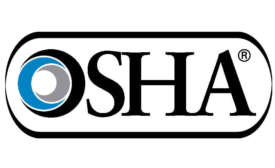Home » OSHA regulations
Articles Tagged with ''OSHA regulations''
Thought Leadership
Whistleblowers, past and present
How to avoid repeat mistakes and understand ethical dilemmas
January 17, 2021
4 steps to an effective respiratory protection program
Breathe easy with a plan
October 14, 2020
Editorial Comments
Workers must feel safe: Those going back to work are risking their lives
October 14, 2020
Best Practices
Despite benefits in testing and observation, there are many risks to smoke tubes
October 14, 2020
Are You Ready for National Safety Stand-Down?
5 Things You Can Do to ‘Walk the Talk’
September 7, 2020
Safeguard your employees
Using personal fall arrest systems require serious planning, training
July 14, 2020
Never miss the latest news and trends driving the safety industry
eNewsletter | Website | eMagazine
JOIN TODAYCopyright ©2024. All Rights Reserved BNP Media.
Design, CMS, Hosting & Web Development :: ePublishing











